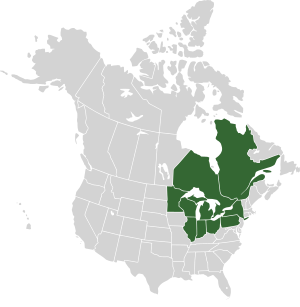Great Lakes Charter
The Great Lakes Charter is a good-faith agreement among the Governors of the U.S. states of Illinois, Indiana, Michigan, Minnesota, New York, Ohio, Pennsylvania and Wisconsin, and the Premiers of the Canadian provinces of Ontario and Quebec. The charter outlines a series of principles to collectively manage the use of the Great Lakes Basin's water supply. It also includes a notice and consultation process for proposals to divert large amounts of water out of the Basin and for large in-Basin uses. It was signed on February 11, 1985.[1]
Long name:
| |
|---|---|
 | |
| Signed | February 11, 1985 |
| Location | Milwaukee, Wisconsin |
| Condition | Signed by 8 Great Lakes Governors and 2 Premiers |
| Signatories | |
| Languages | French, English |
In 2001, the Great Lakes Governors and Premiers signed an Annex to the Great Lakes Charter. This led to the Great Lakes-St. Lawrence River Basin Sustainable Water Resources Agreement of 2005 and the Great Lakes Compact which became effective in 2008.
The Council of Great Lakes Governors serves as secretariat to the Governors' and Premiers' Regional Body created by the Agreement and the Governors' Compact Council created by the Compact.
References
- "The Great Lakes Charter", Council of Great Lakes Governors, Retrieved March 31, 2010.